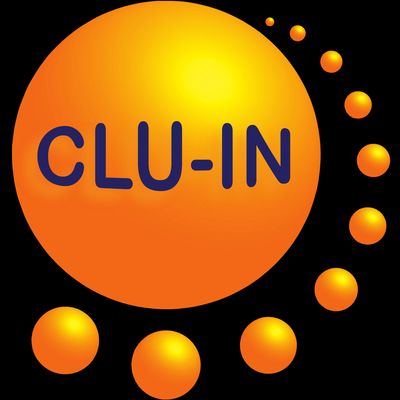Since 1998, The Contaminated Site Clean-Up Information (CLU-IN) website has presented Internet Seminars covering a wide variety of technical topics related to hazardous waste characterization, monitoring, and remediation. For select seminar topics offered since 2012, we are making complete video recordings available through our archives. This feed contains all video seminars archived in the last 12 months. For a complete list of seminars archived since 2000, please visit http://www.clu-in.org/live/archive/. Our Rehabilitation Act Notice for reasonable accommodation is available at http://www.clu-in.org/training/accommodation.cfm. CLU-IN was developed by the U.S. Environmental Protection Agency (EPA) but is intended as a forum for all waste remediation stakeholders. For more information and to view upcoming live offerings, please visit http://www.clu-in.org/live/. For a complete list of RSS feeds available on CLU-IN, please visit http://www.clu-in.org/rss/about/.
http://www.clu-in.org/live/archive
Gesamtlänge aller Episoden: 13 days 3 hours 21 minutes
Characterization and Remediation of Fractured Rock (Dec 4, 2018)
Characterization and remediation of contaminated groundwater in fractured rock has not been conducted or studied as broadly as groundwater at unconsolidated porous media sites. This unfamiliarity and lack of experience can make fractured rock sites perplexing. This situation is especially true in portions of the U.S. where bedrock aquifers are a primary source of drinking and process water, and demands on water are increasing...
Long-term Contaminant Management Using Institutional Controls (Nov 29, 2018)
Institutional controls (ICs) are administrative or legal restrictions that provide protection from exposure to contaminants on a site. When ICs are jeopardized or fail, direct exposure to human health and the environment can occur...
Effectiveness of Point of Entry Systems to Remove Select Per- and Poly- fluoroalkyl Substances from Drinking Water (Nov 26, 2018)
Per- and poly-fluoroalkyl Substances (PFAS) contamination of groundwater sources in the U.S. is a widespread problem for the drinking water industry. Well water supplies in the municipalities of Fountain, Security, and Widefield, Colorado, contain Perfluorooctanoic Acid (PFOA) and Perfluorooctane Sulfonate (PFOS) greater than U.S. Environmental Protection Agency (EPA) health advisory level of 70 nanograms/liter (ng/L)...
Groundwater/Surface Water Interactions: Developing Conceptual Site Models of Organism Exposures in Hyporheic Systems (Nov 16, 2018)
This training workshop will present an overview of the relationships and interactions between groundwater and surface water bodies, giving participants a greater understanding of potential exposure scenarios. Discussions will focus on developing effective conceptual site models and how to collect useful data from the hyporheic zone, with case study examples. The training will end with a panel discussion and direction to EPA resources...
Chlorinated Solvent Bioremediation: Fundamentals and Practical Application for Remedial Project Managers (Nov 14, 2018)
Anaerobic reductive dechlorination (ARD) can be used to cost-effectively remediate chlorinated solvent sites. In ARD, microbial communities use substrates to sequentially degrade chlorinated solvents such as trichlorethylene (TCE). Depending on conditions at a site, remediation may involve adding substrates (biostimulation) and/or dechlorinating organisms (bioaugmentation)...
Connecting the Science to Managing LNAPL Sites a 3 Part Series - Part 3 (Nov 13, 2018)
Connecting the Science to Managing LNAPL Sites ? 3-Part Series The newly updated LNAPLs (Light Non-Aqueous Phase Liquids) 3-part training course series is based on the ITRC guidance: LNAPL Site Management: LCSM Evolution, Decision Process, and Remedial Technologies (LNAPL-3, 2018) and focuses on connecting the science to managing LNAPL sites and helping you: Build upon your Understanding of LNAPL Behavior in the Subsurface (Part 1) Develop your LNAPL Conceptual Site Model and LNAPL Remedial...
NARPM Presents...Introduction to Near Surface Environmental Geophysics Webinar - A Practical Guide for Commonly Used Methods and Applications (Nov 8, 2018)
This webinar will present a general overview of several geophysical methods which are commonly used at environmental waste sites. The primary focus will be keyed to practical applications of each method...
Connecting the Science to Managing LNAPL Sites a 3 Part Series - Part 2 (Nov 6, 2018)
Connecting the Science to Managing LNAPL Sites ? 3-Part Series The newly updated LNAPLs (Light Non-Aqueous Phase Liquids) 3-part training course series is based on the ITRC guidance: LNAPL Site Management: LCSM Evolution, Decision Process, and Remedial Technologies (LNAPL-3, 2018) and focuses on connecting the science to managing LNAPL sites and helping you: Build upon your Understanding of LNAPL Behavior in the Subsurface (Part 1) Develop your LNAPL Conceptual Site Model and LNAPL Remedial...
Connecting the Science to Managing LNAPL Sites a 3 Part Series - Part 1 (Oct 30, 2018)
Connecting the Science to Managing LNAPL Sites ? 3-Part Series The newly updated LNAPLs (Light Non-Aqueous Phase Liquids) 3-part training course series is based on the ITRC guidance: LNAPL Site Management: LCSM Evolution, Decision Process, and Remedial Technologies (LNAPL-3, 2018) and focuses on connecting the science to managing LNAPL sites and helping you: Build upon your Understanding of LNAPL Behavior in the Subsurface (Part 1) Develop your LNAPL Conceptual Site Model and LNAPL Remedial...
Geophysical Method Selection: Matching Study Goals, Method Capabilities and Limitations, and Site Conditions (Oct 29, 2018)
This webinar will provide an overview of geophysical method selection. Although geophysical methods have the potential to improve site characterization and monitoring, the effectiveness of different geophysical methods at a particular site strongly depends on project goals (e.g., identifying discrete fractures) and site characteristics (e.g., lithology). No method works at every site or for every goal, and sometimes combinations of methods are needed...
